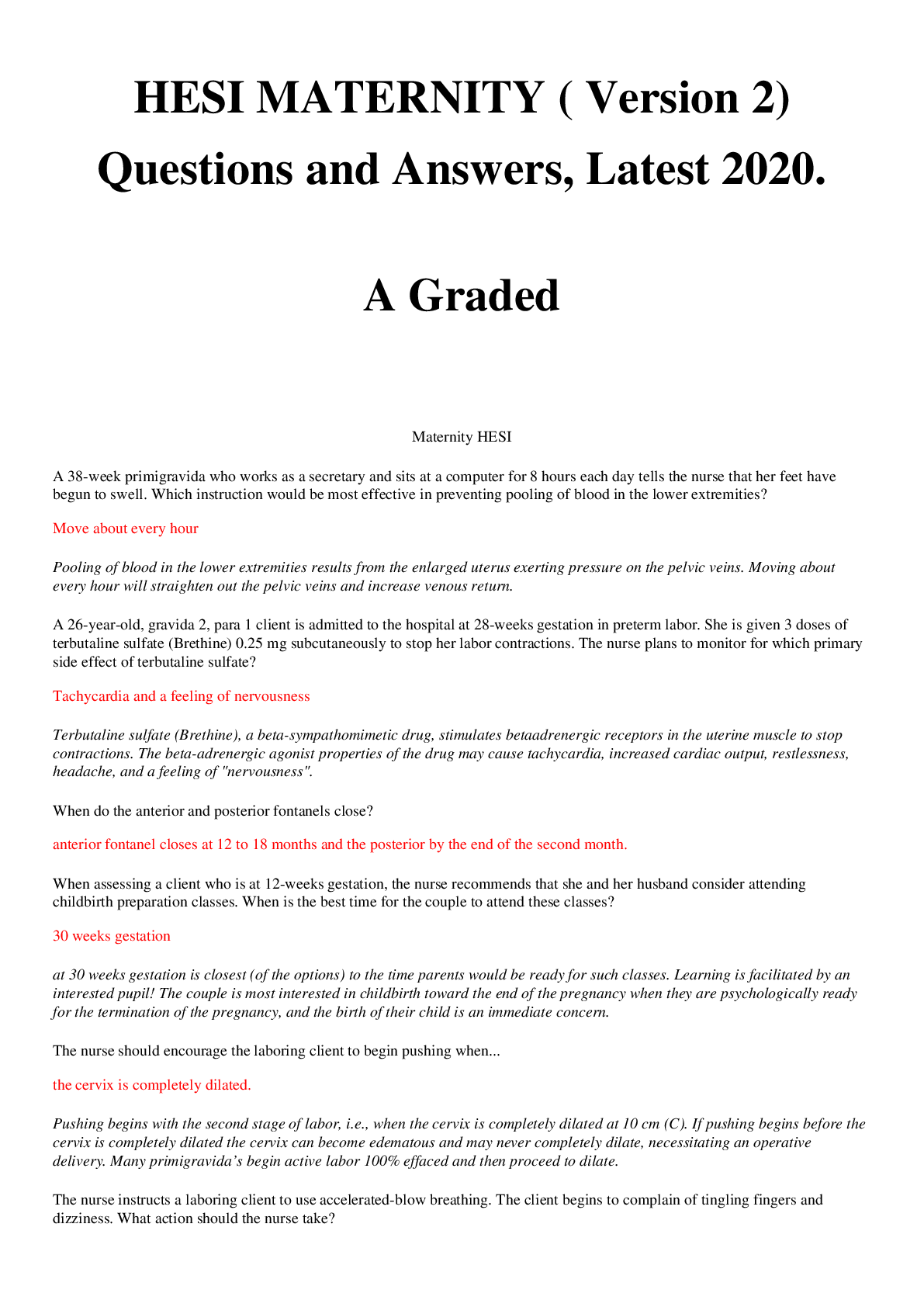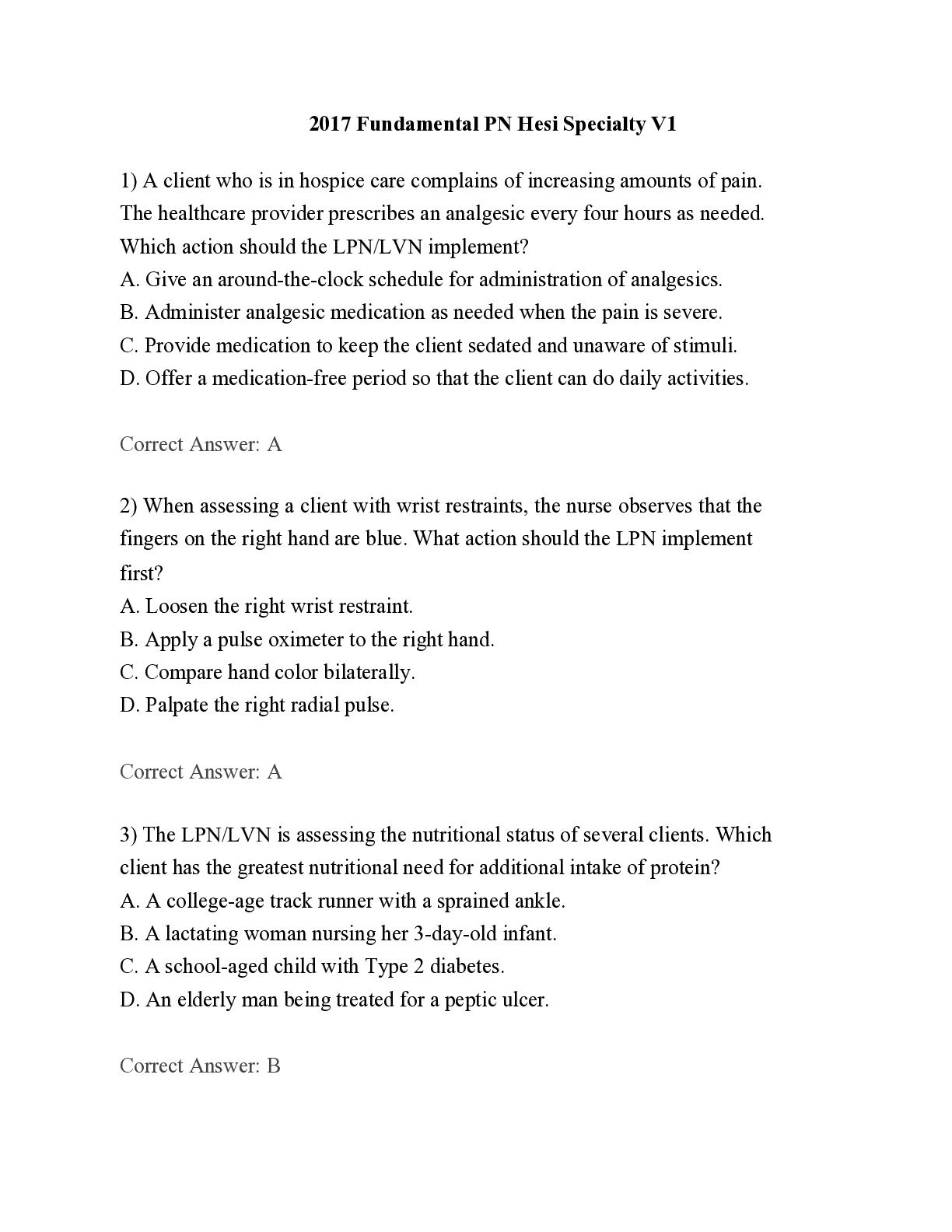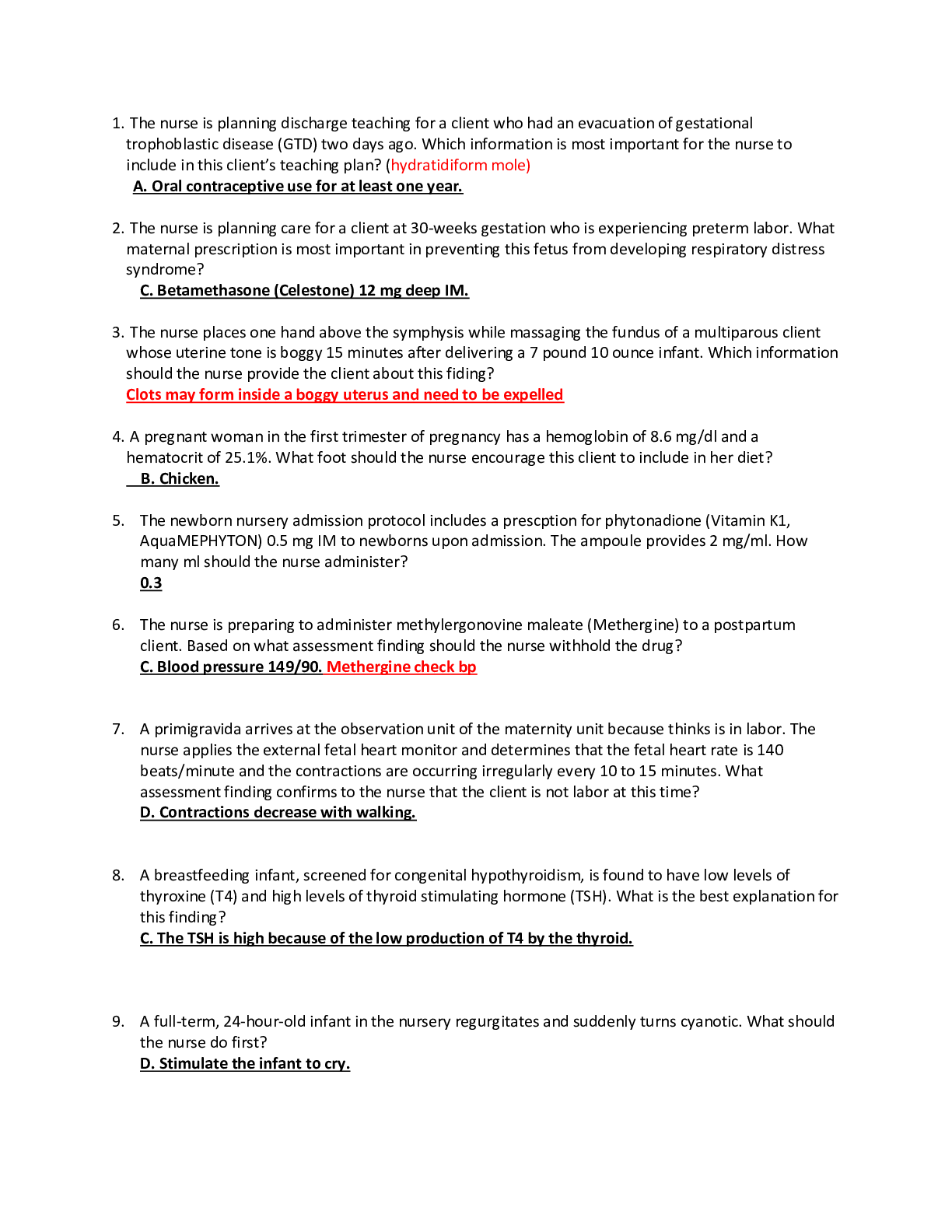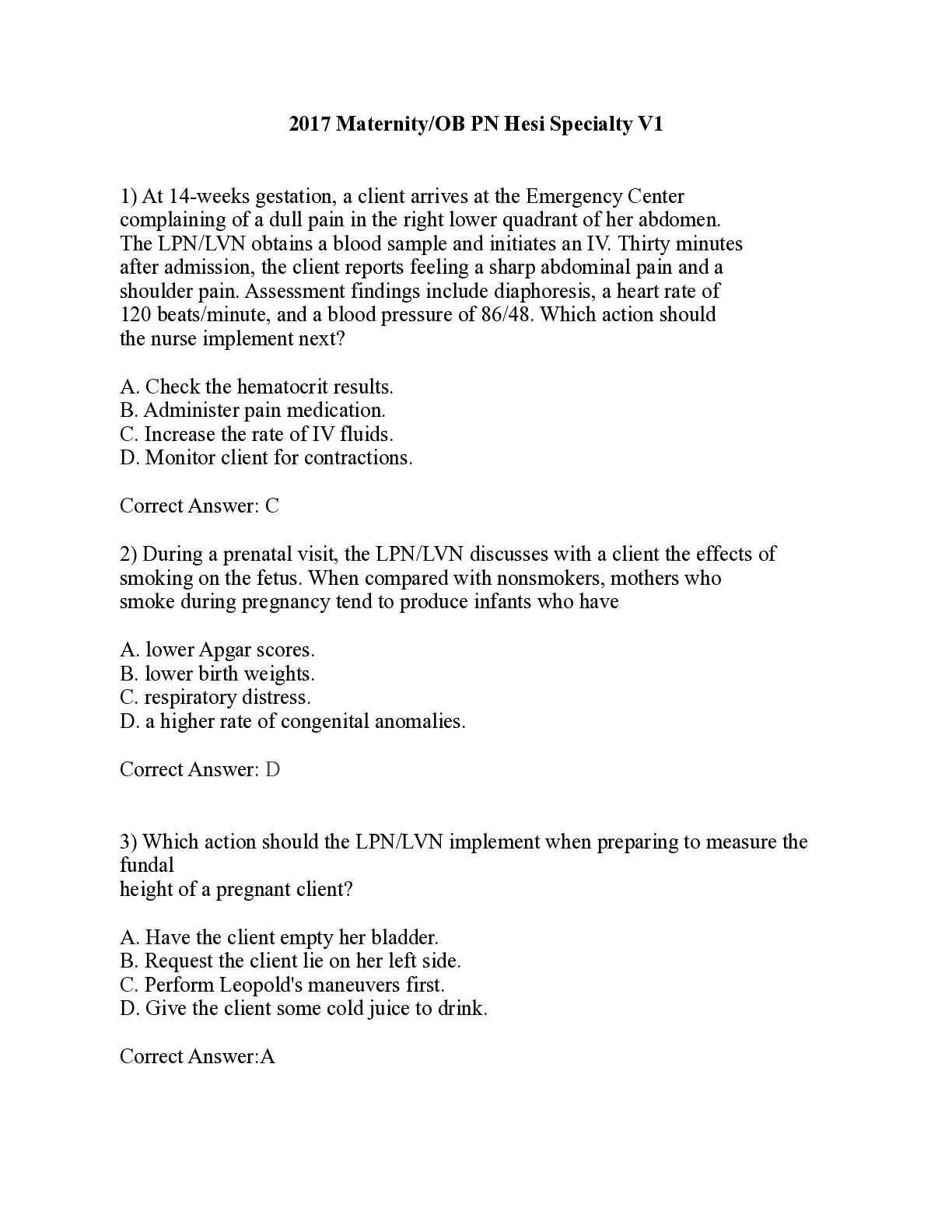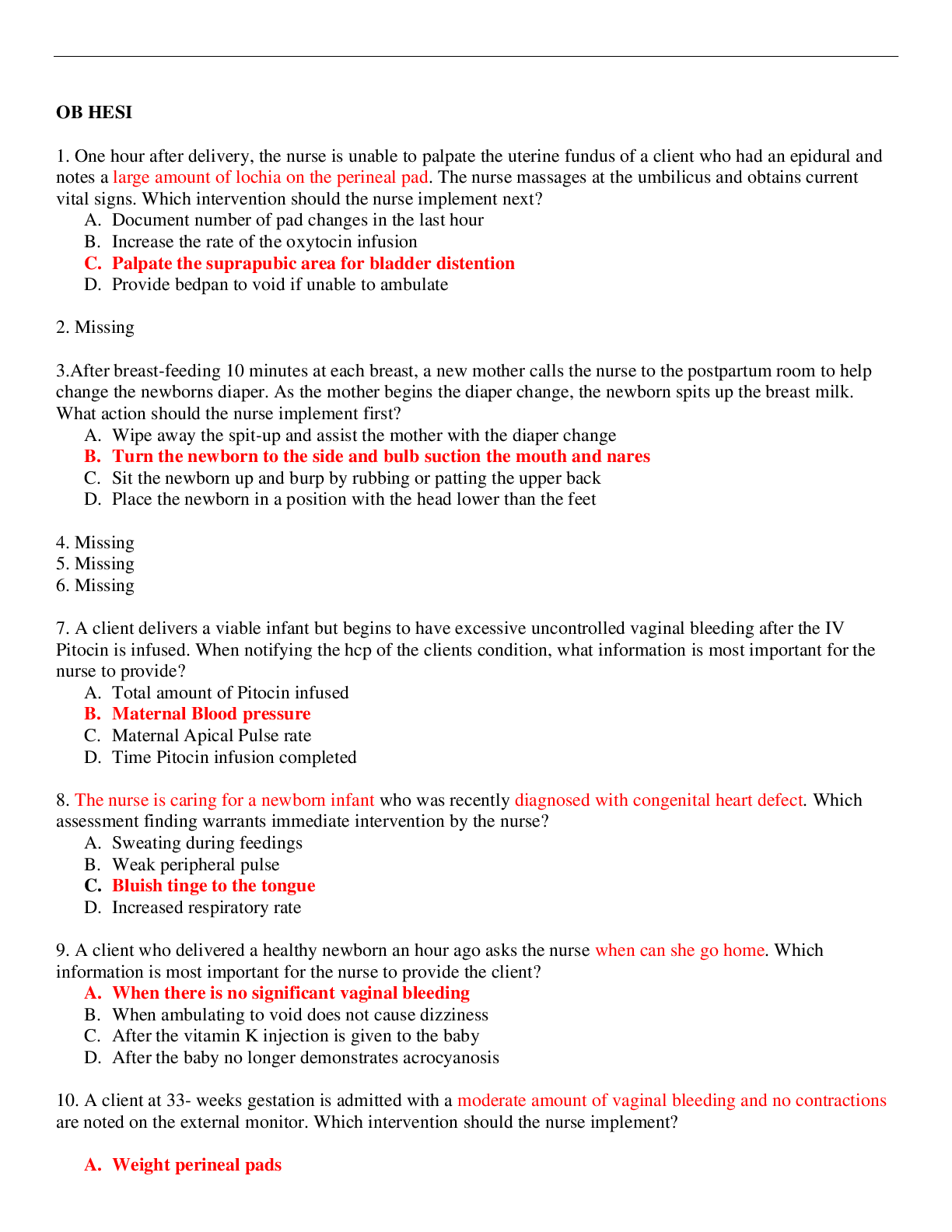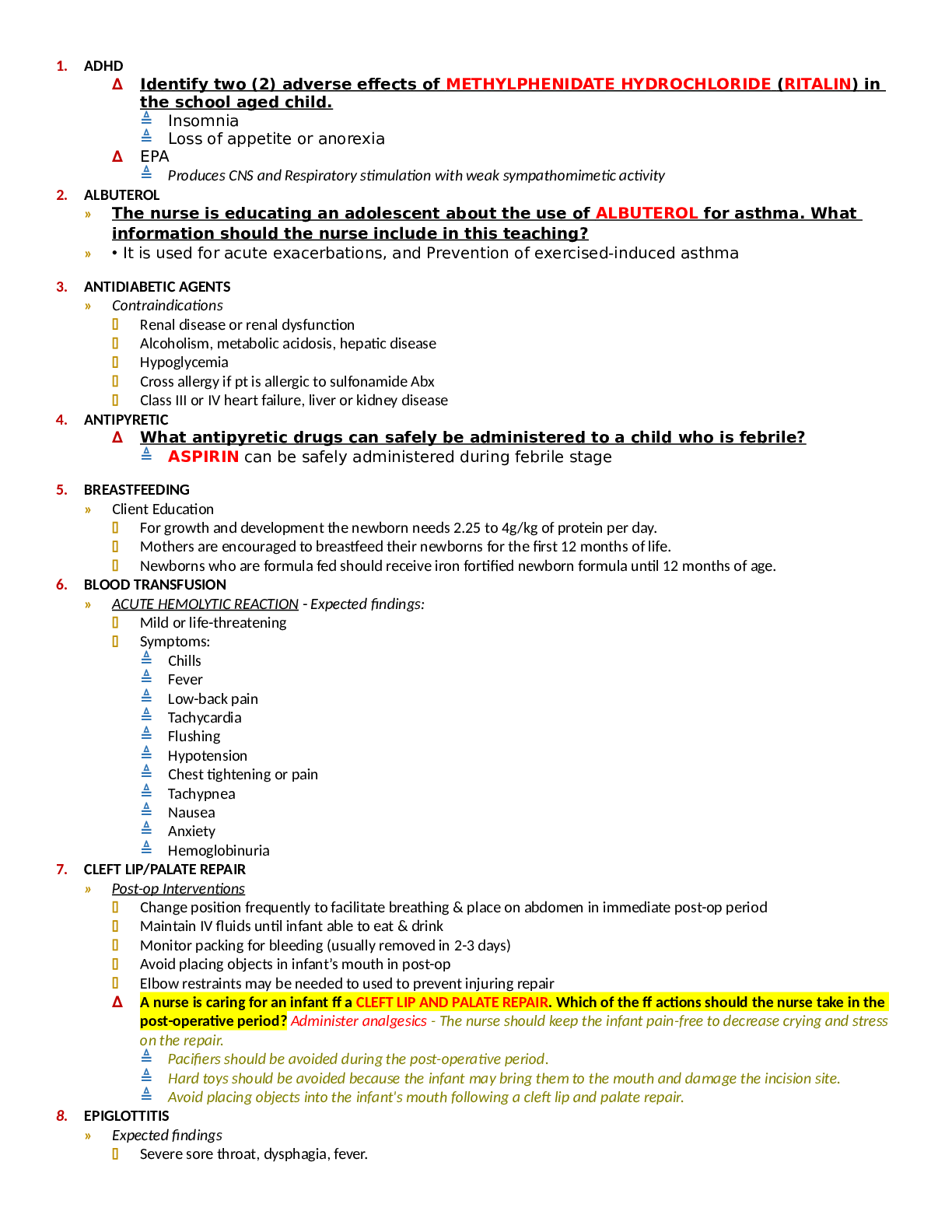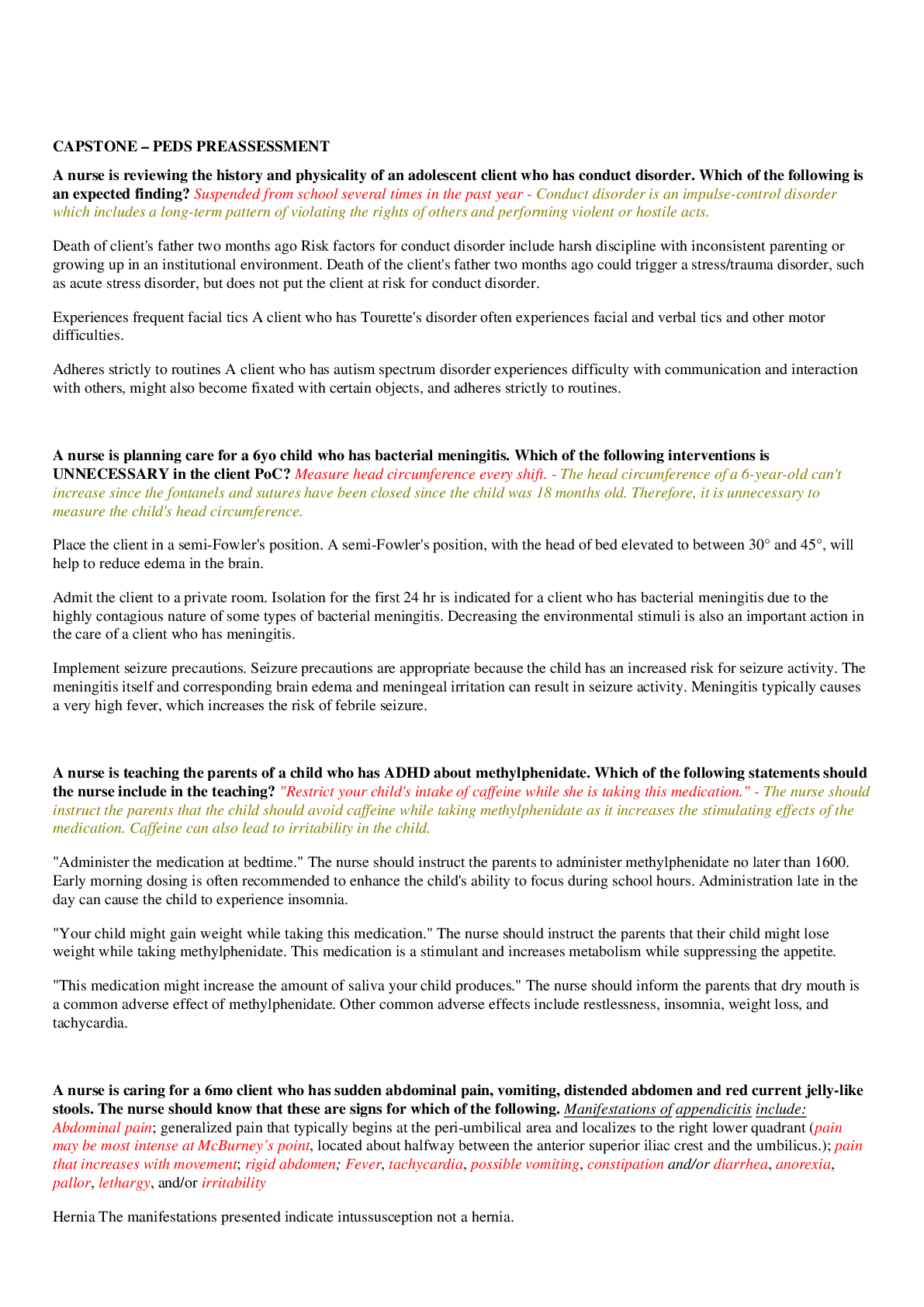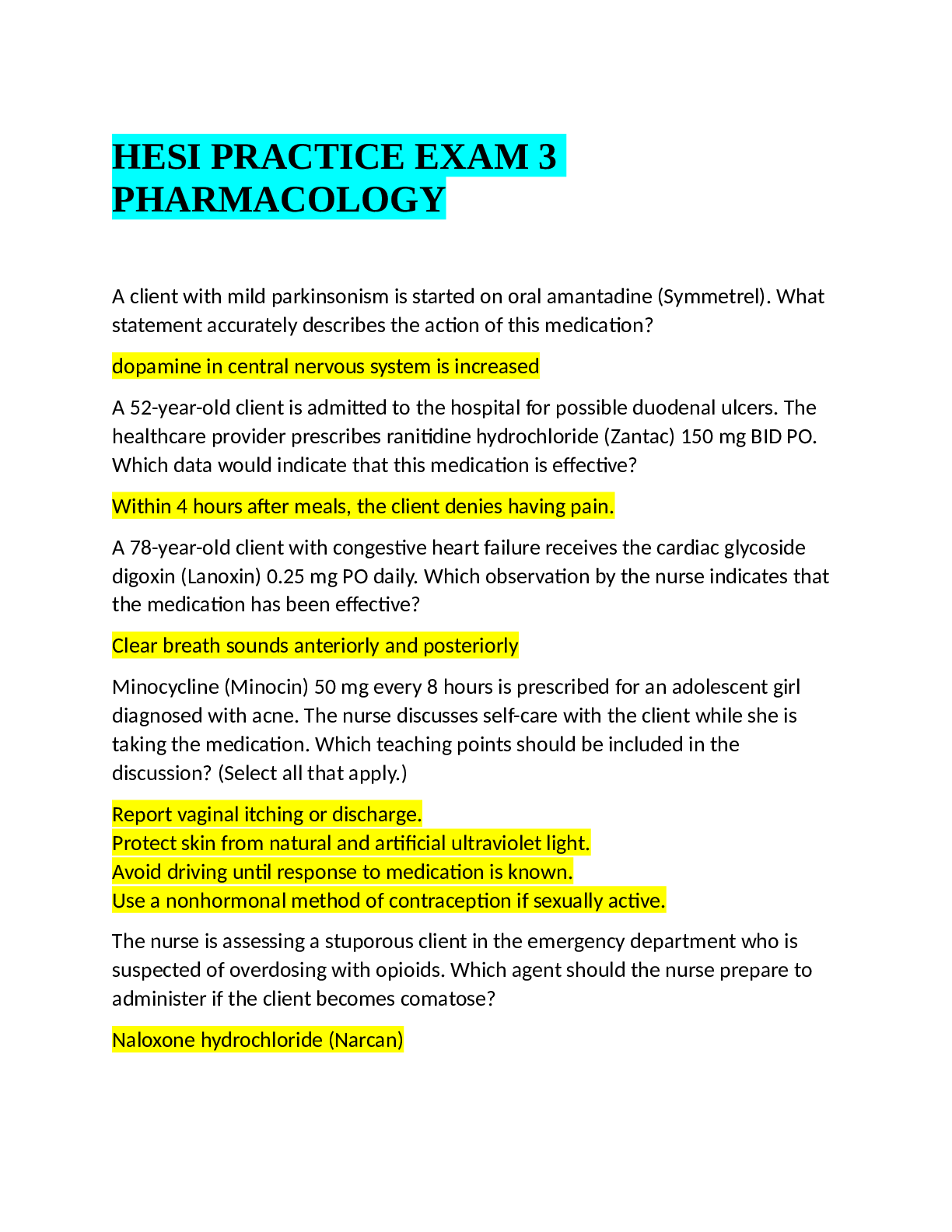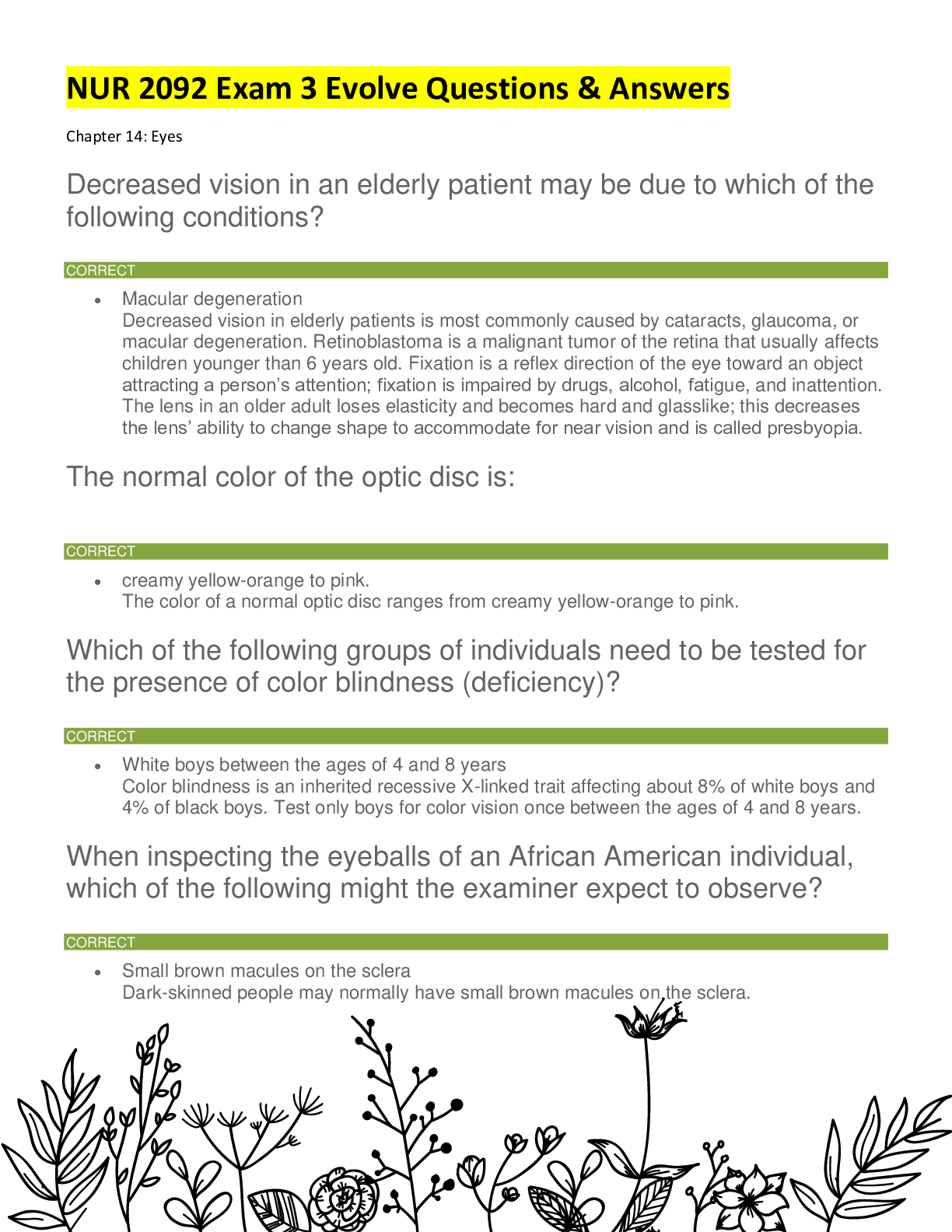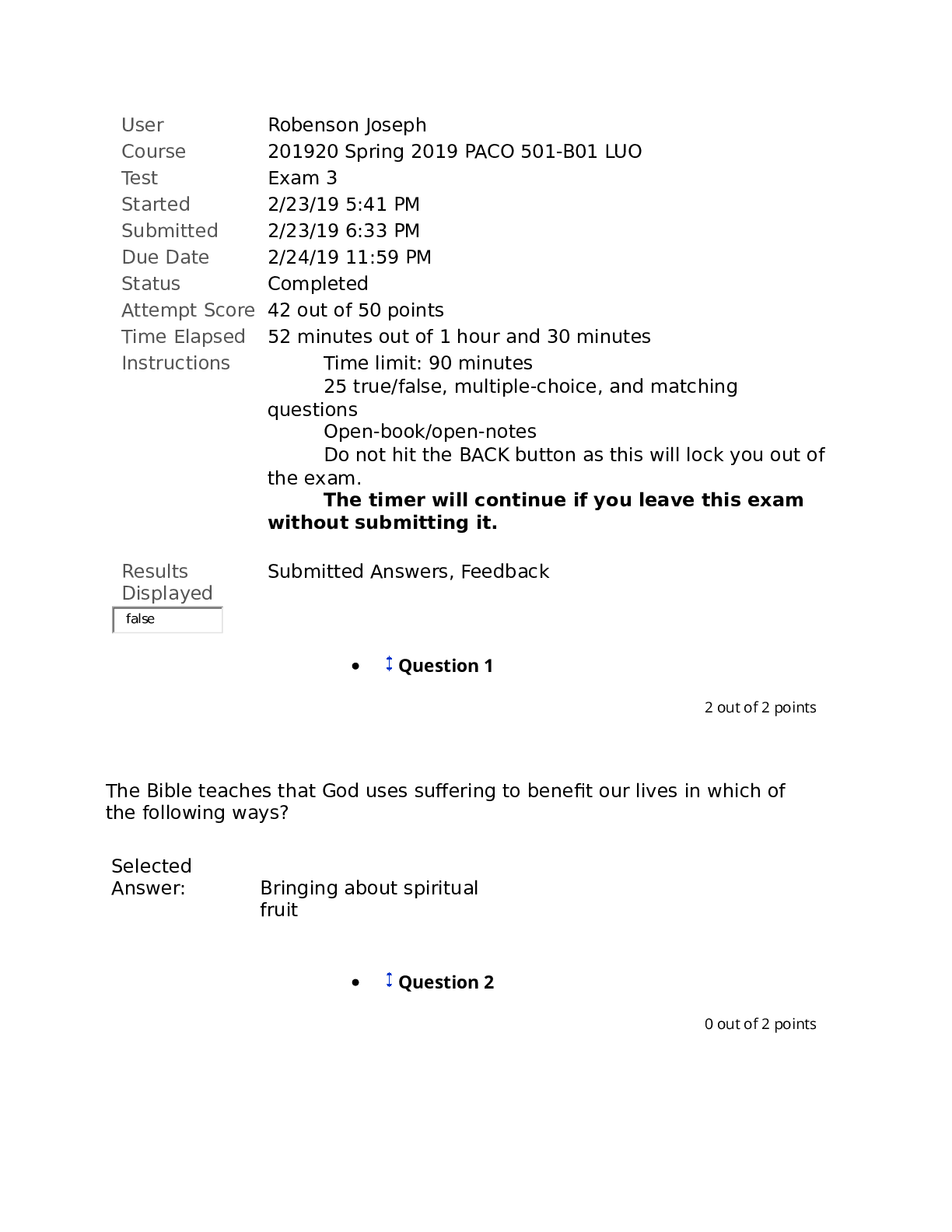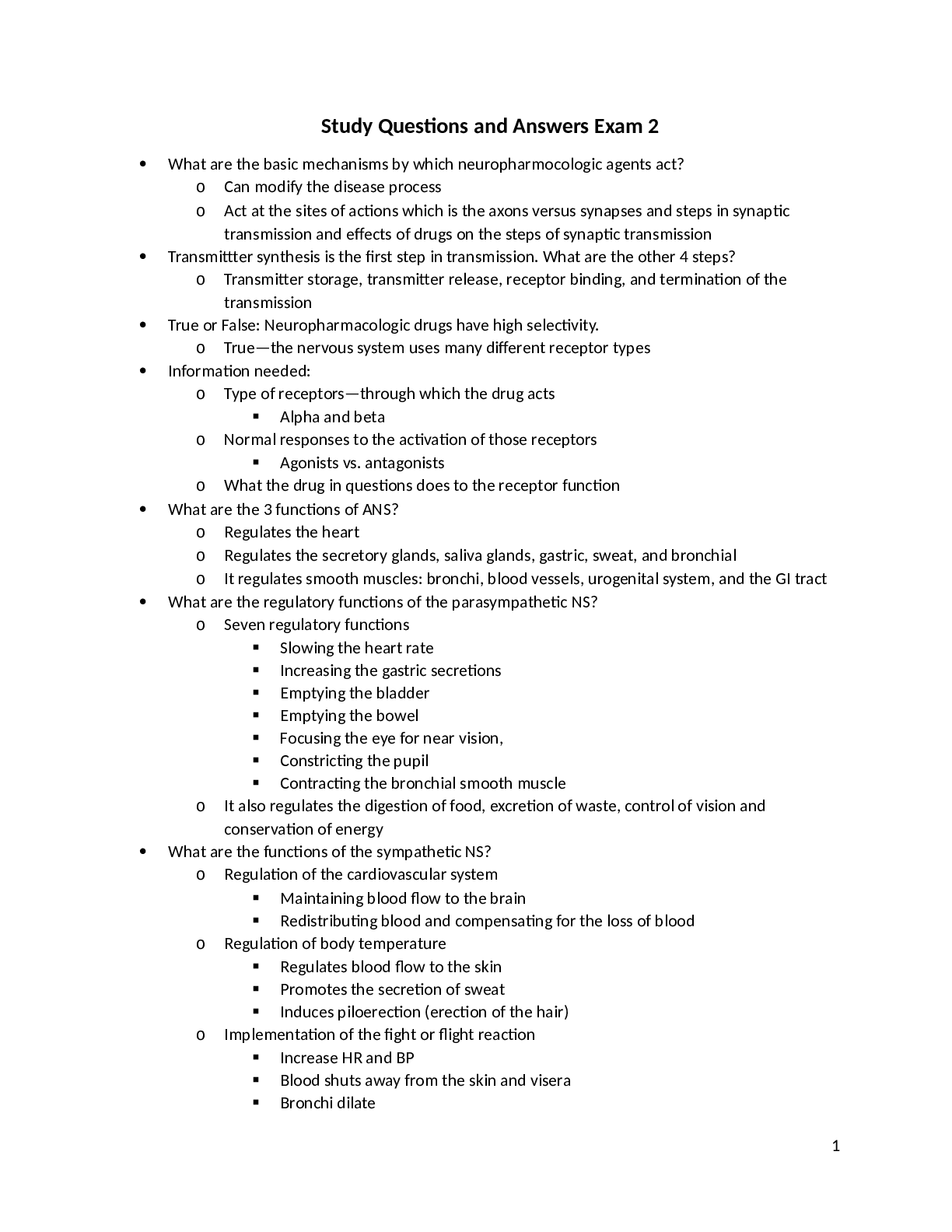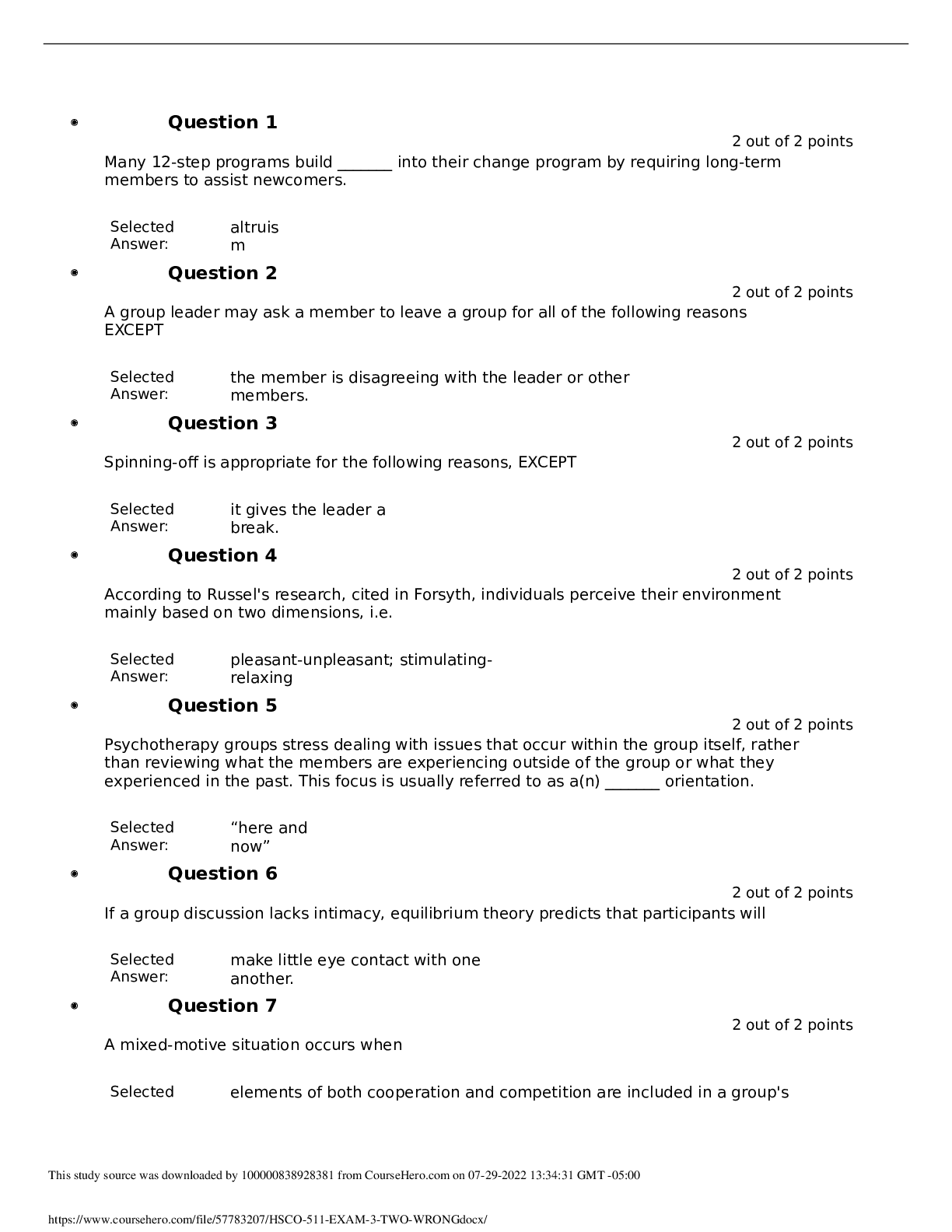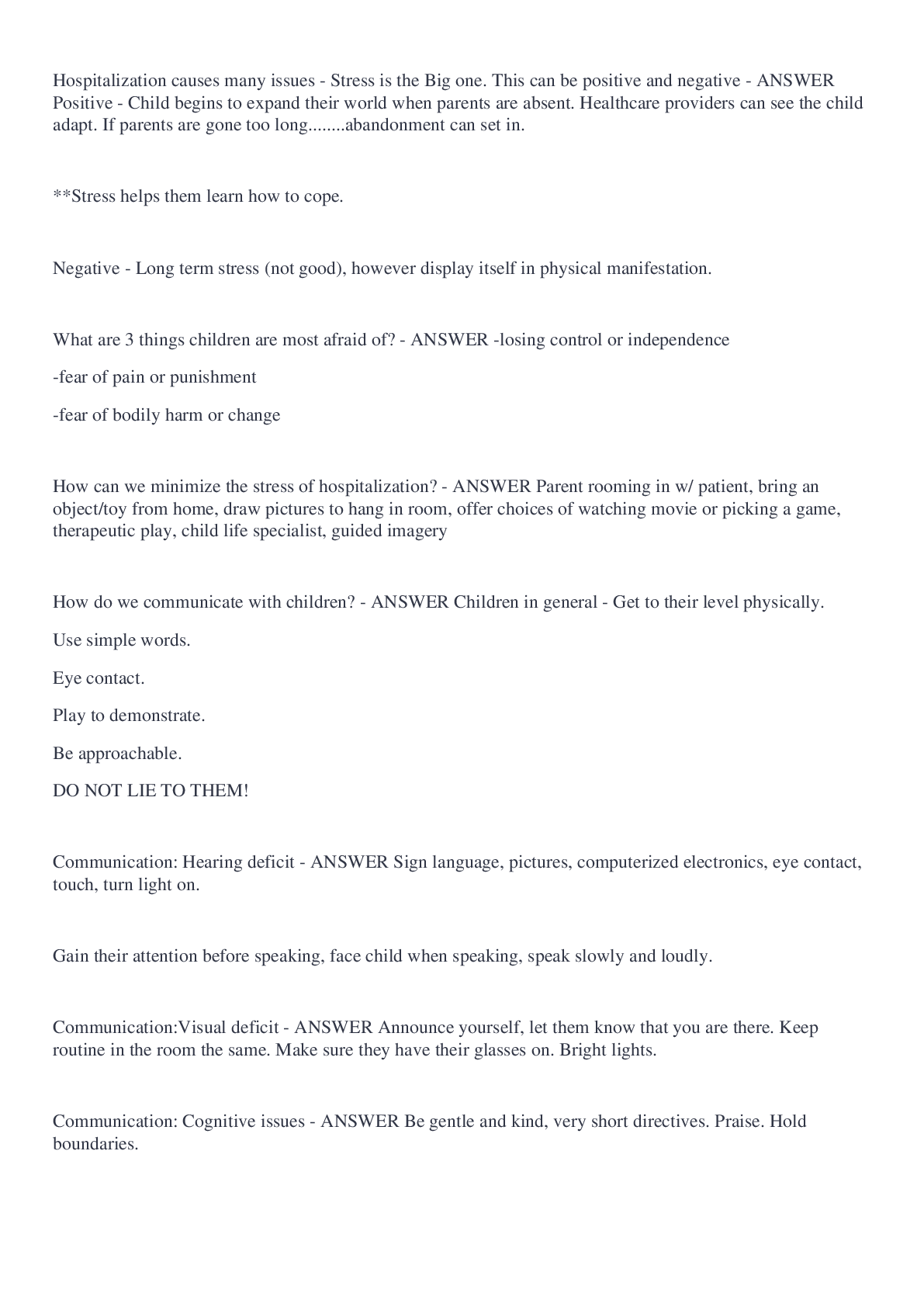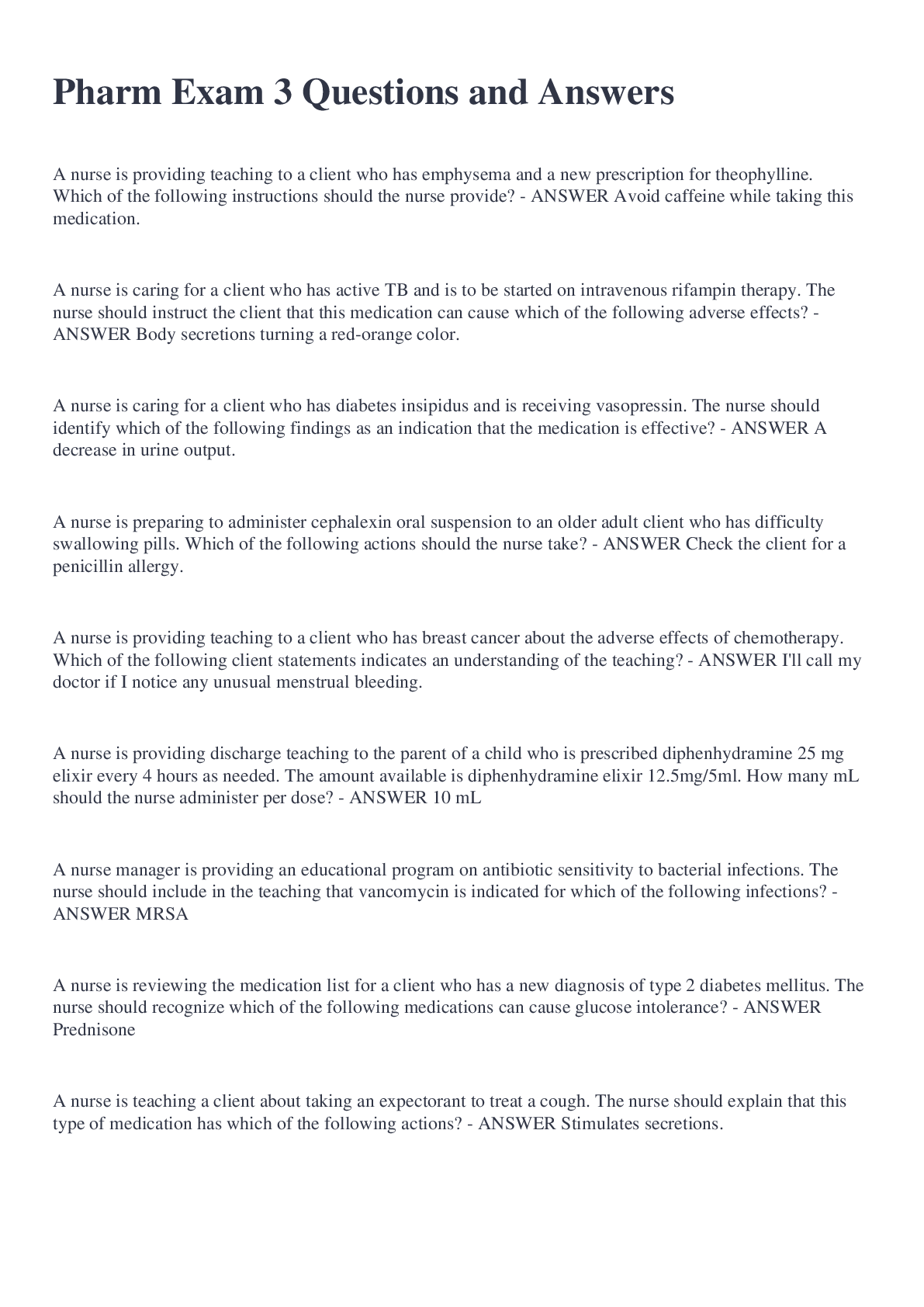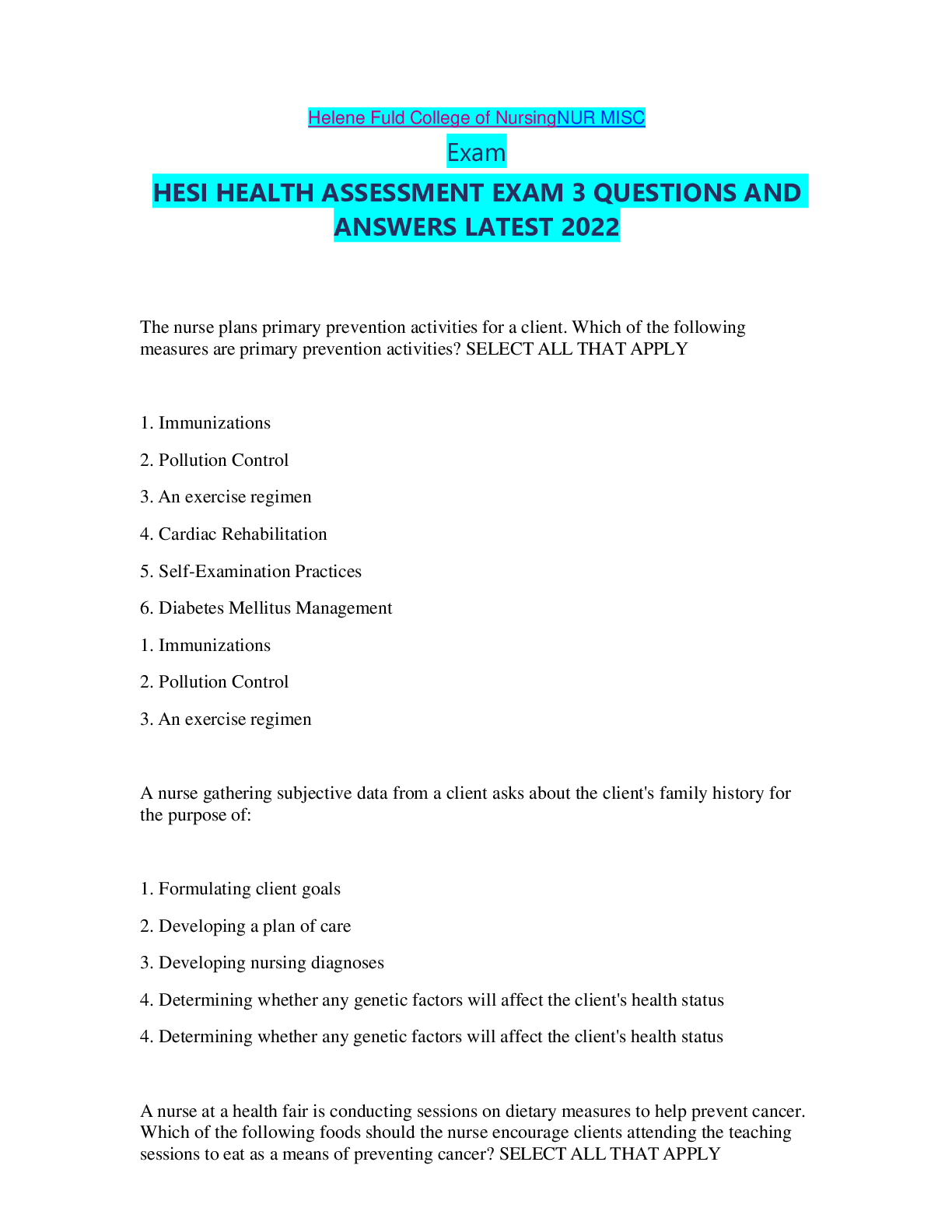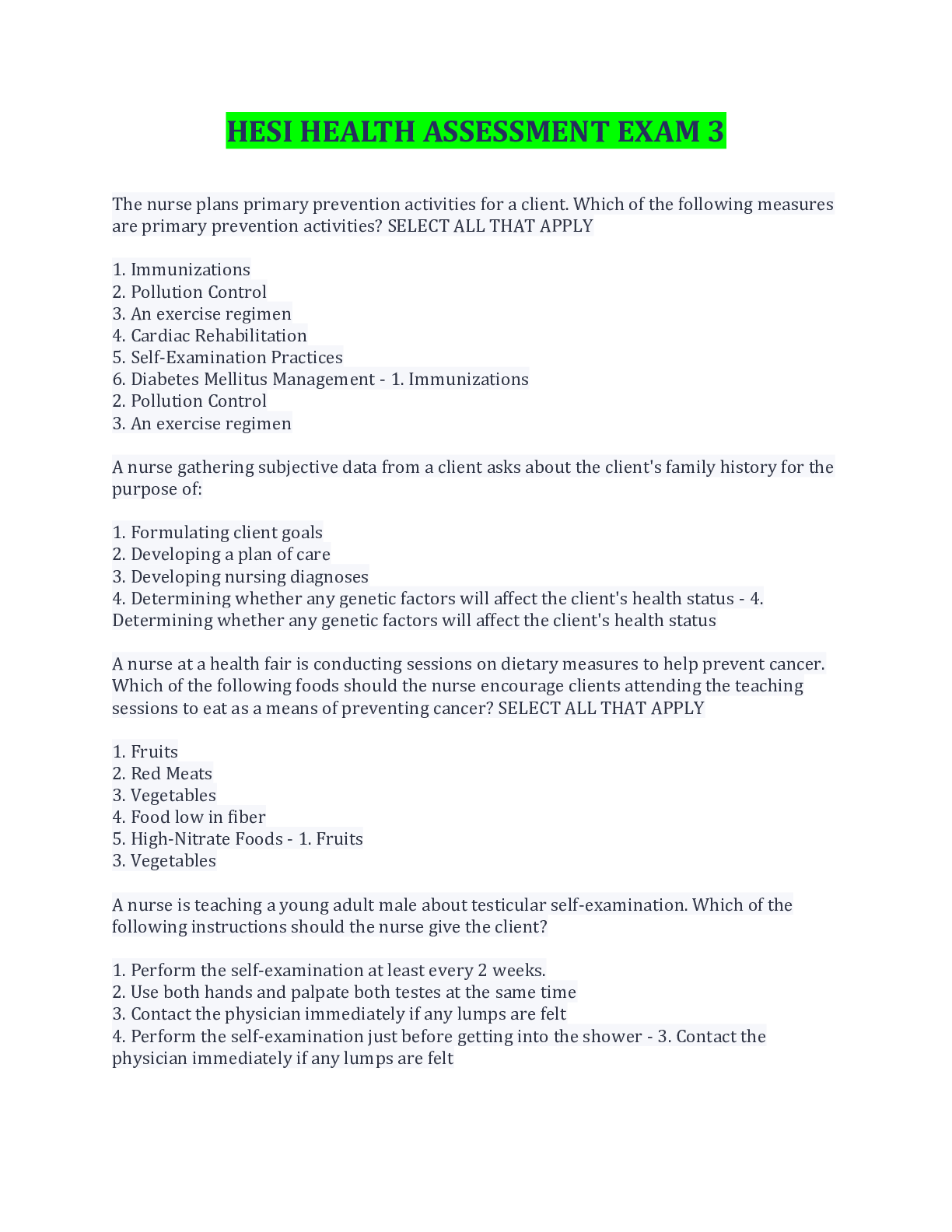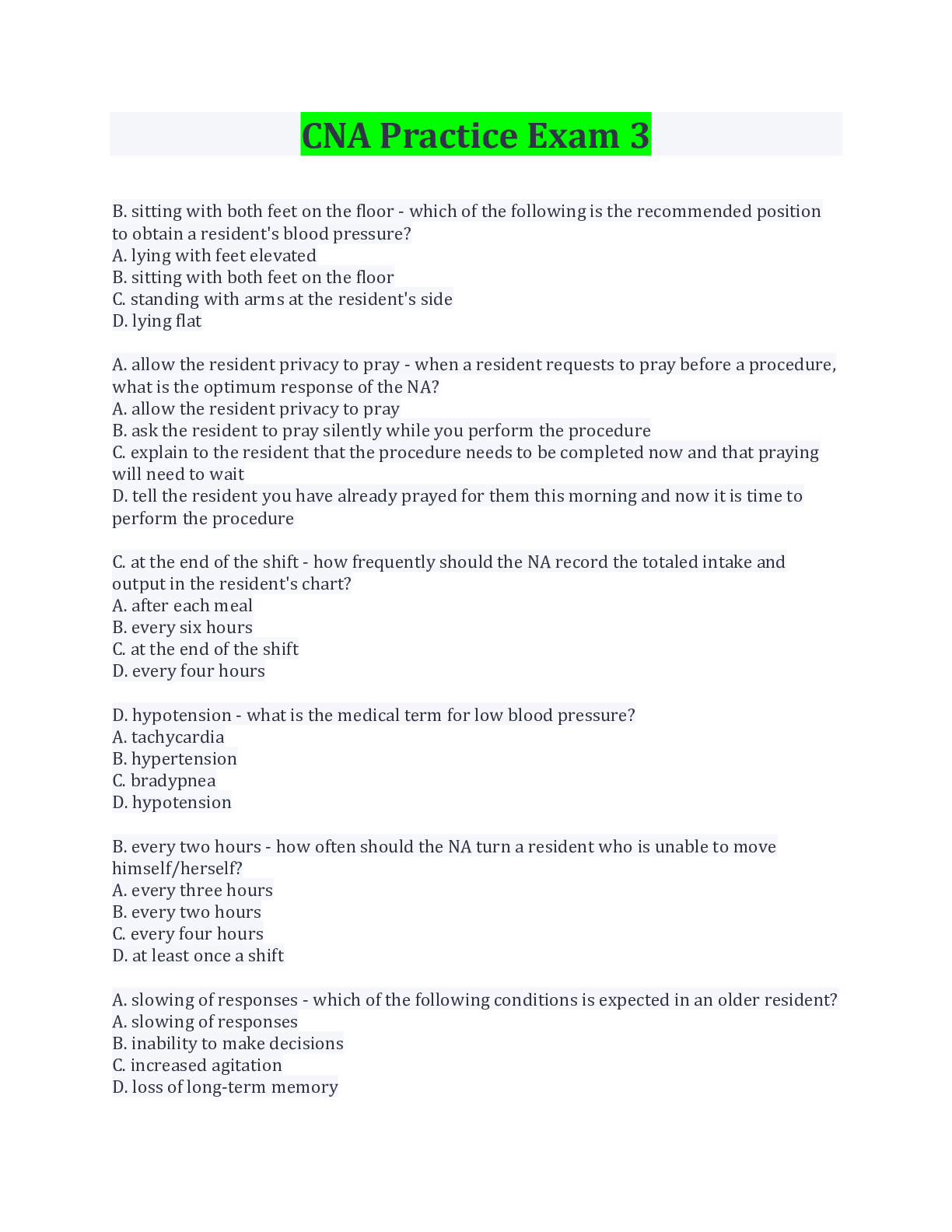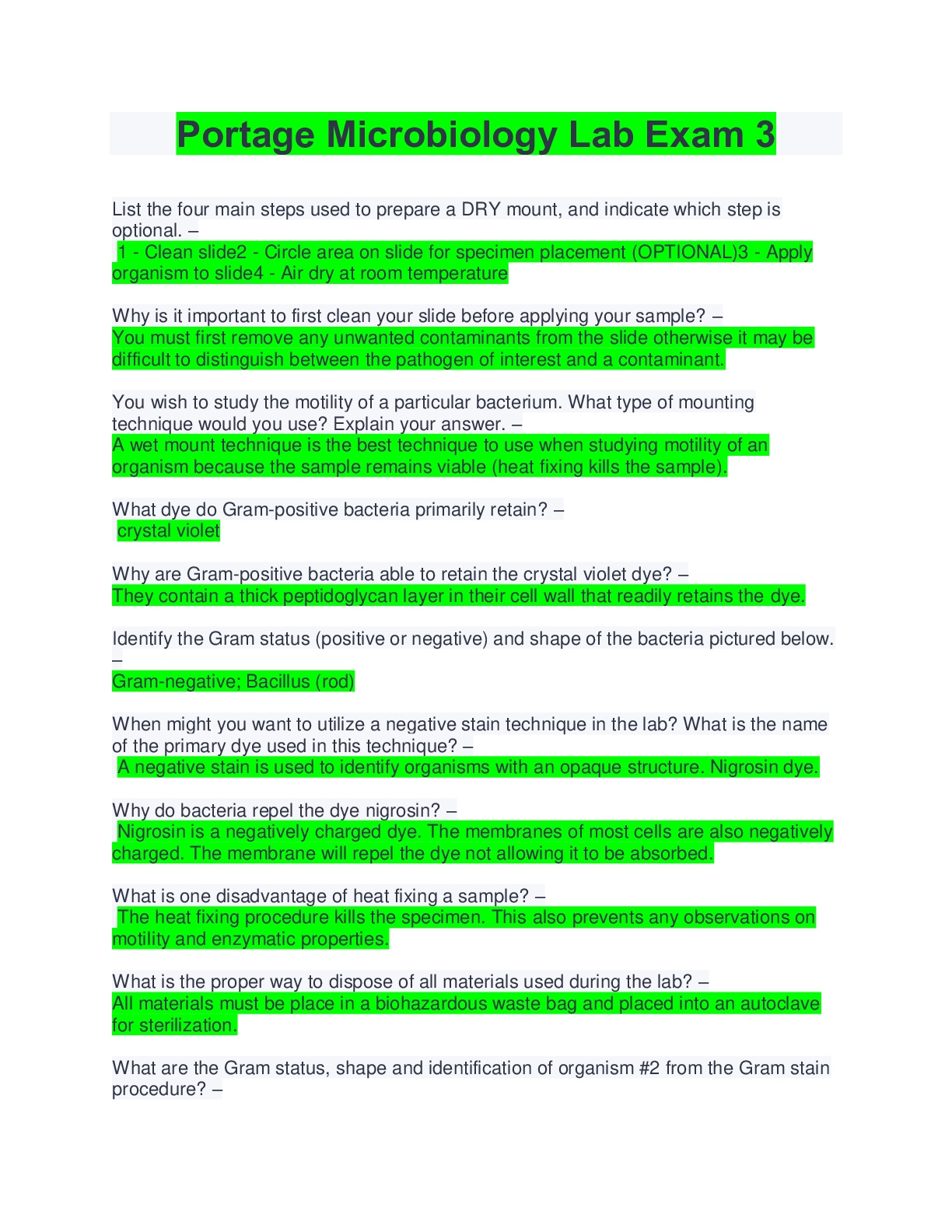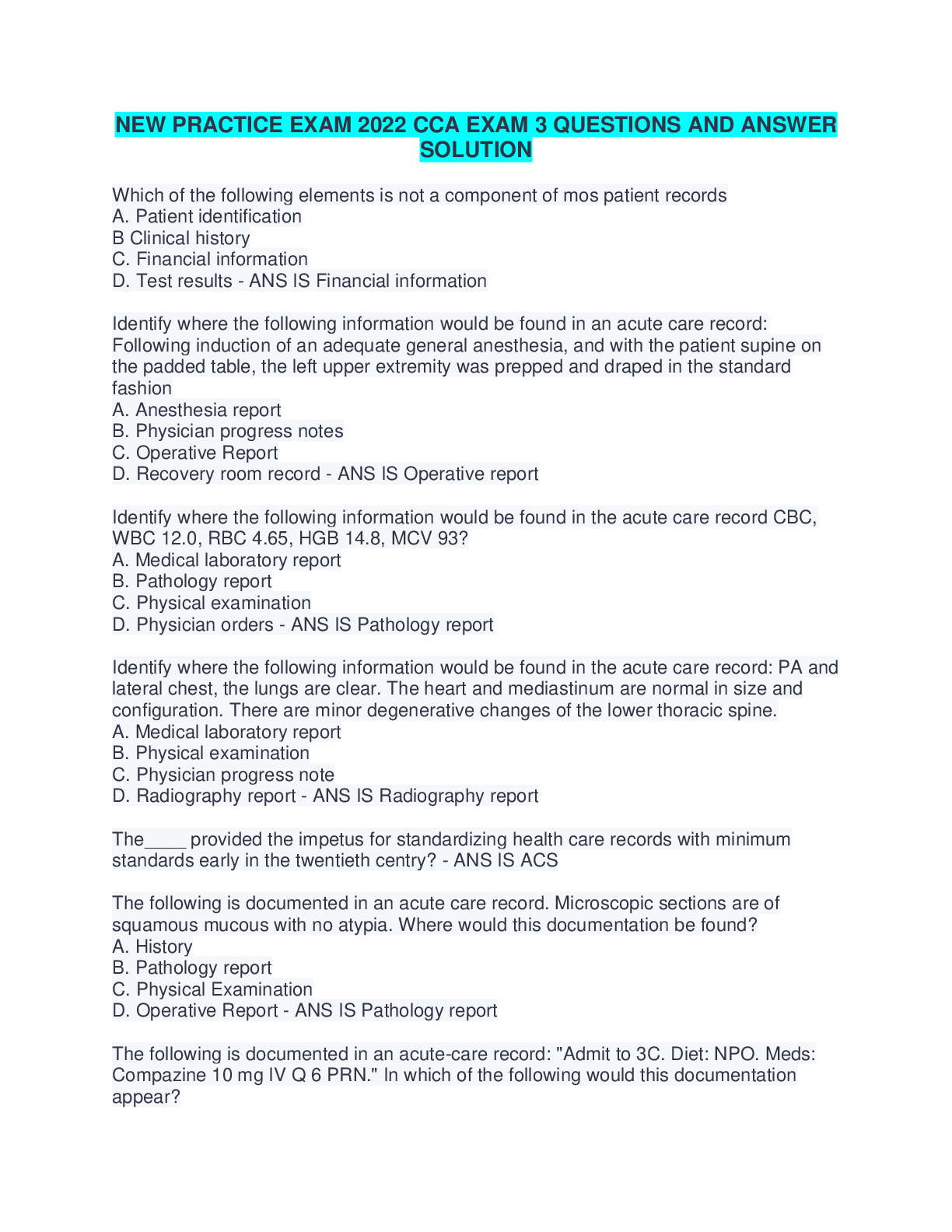Health Care > EXAM > NURS 5334 EXAM 3 QUESTIONS & ANSWERS, ALL 100% CORRECT. (All)
NURS 5334 EXAM 3 QUESTIONS & ANSWERS, ALL 100% CORRECT.
Document Content and Description Below
NURS 5334 EXAM 3 QUESTIONS & ANSWERS, ALL 100% CORRECT.What drugs are used to treat gestational diabetes? o Metformin and Insulin What A1C value indicates diabetes mellitus? Pre-DM? o 6.5% or g... reater is considered diabetes o 5.7-6.4% pre-diabetes What fasting and random values indicate DM? o Fasting plasma glucose—126 or greater is diabetes o Random (casual) plasma glucose—anything greater than 200 is diabetes What are complications of insulin therapy? o Hypoglycemia o Can develop lipohypertrophy Accumulation of subcutaneous fat that occurs when it is injected too frequently at the same site o Allergic reactions Characterized by red and intensely itchy welts, breathing becomes difficult If severe allergy develops: Desensitization procedure (small doses to larger doses) o Hypokalemia Promotes the uptake of potassium cells and insulin activates a membrane-bound enzyme with sodium potassium and ATPase that pumps potassium into the cells and sodium out Drug interactions? o Hypoglycemic agents Can intensify the hypoglycemia included by insulin Examples: sulfonylureas, glinides, alcohol o Use with caution with hyperglycemic agents Examples: thiazide and glucocorticoids and sympathomimetics What effect do beta blockers have on insulin? o delay awareness of and response to hypoglycemia by masking the signs that are associated with stimulation of sympathetic nervous system o Impair glycogenolysis o Prevent the bodies counter-regulatory response What are other therapeutic uses besides DM? o Hyperkalemia o Aids in diagnosis of GH deficiency o Diabetic ketoacidosis Insulin dosage must be coordinated with what? o Carbohydrate intake What is B/P goal in diabetic? o To be controlled, within normal 120/80 What medication can be given to decrease risk of diabetic nephropathy? o ACE inhibitor or ARB 1 What role does exercise play in treatment of both type 1 and type 2 DM? o Exercise increases cellular responsiveness to insulin and increases glucose tolerance o 150 minute per week of moderate intensity exercise is recommended What are the 4 steps in the 4-step approach? o Step 1—diagnosis Lifestyle changes plus metformin o Step 2 Lifestyle changes plus metformin and a second drug (sulfonylurea, TZD or a DPP4 inhibitor, a sodium glucose cotransporter or SGLT-2 inhibitor, a glucagon-like peptide 1, or a GLP-1 receptor agonist or basal insulin Second drug choice made considering efficacy, the hypoglycemia risk of the patient, the patient tolerability, and weight-related considerations (some help weight loss, some cause weight gain), cost o Step 3 Three drug combination Metformin Plus 2 other drugs from step 2 o Decided based on a drug and patient specific considerations o Step 4 If 3 drug combination that includes basal insulin fails after 3-6 months, more complex insulin regimen Usually in combination with one or more non-insulin medications When a patient is on insulin therapy what are the blood glucose goals before meals? At bedtime? o Before meals—70-130 o Bedtime—100-140 What is the A1C goal? When is goal below 7 not appropriate? o 7% or below o Those with severe hypoglycemia risk, limited life expectancy, advanced microvascular or macrovascular complications—not below 7 What are the short acting insulins? Intermediate? Long acting? o Short duration: Rapid acting Insulin lispro [Humalog] Insulin aspart [NovoLog] Insulin glulisine [Apidra] o Short duration: Slower acting Regular insulin [Humulin R, Novolin R] o Intermediate duration Neutral protamine Hagedorn (NPH) insulin Insulin detemir [Levemir] o Long duration Insulin glargine When are short duration insulins used? 2 o Administered in association with meals to control the post-prandial rise in blood glucose between meals and at night When are intermediate insulins needed? o Administer 2-3 times daily to provide glycemic control between meals and during the night How long is duration of glargine? Levemir? Degludec? o Glargine—up to 24 hours o Levemir Low dose (0.2 units/kg)—12 hours High doses (0.4 units/kg)—20-24 hours o Degludec—up to 42 hours What are routes of administration? Which can be inhaled? o SQ injection o IV infusion o Inhalation—Afrezza, mealtime insulin What is typical dosing for type 1? Type 2? o Total doses may range from 0.1 unit/kg body weight to more than 2.5 units/kg o Type 1 Initial doses typically range from 0.5-0.6 units/kg per day o Type 2 Initial doses range from 0.2-0.6 units/kg per day Dosage increased or decreased according to carb intake, activity What are the 3 dosing schedules? o Twice daily dosing o Intensive basal/bolus strategy o Continued subcutaneous insulin [Show More]
Last updated: 1 year ago
Preview 1 out of 39 pages
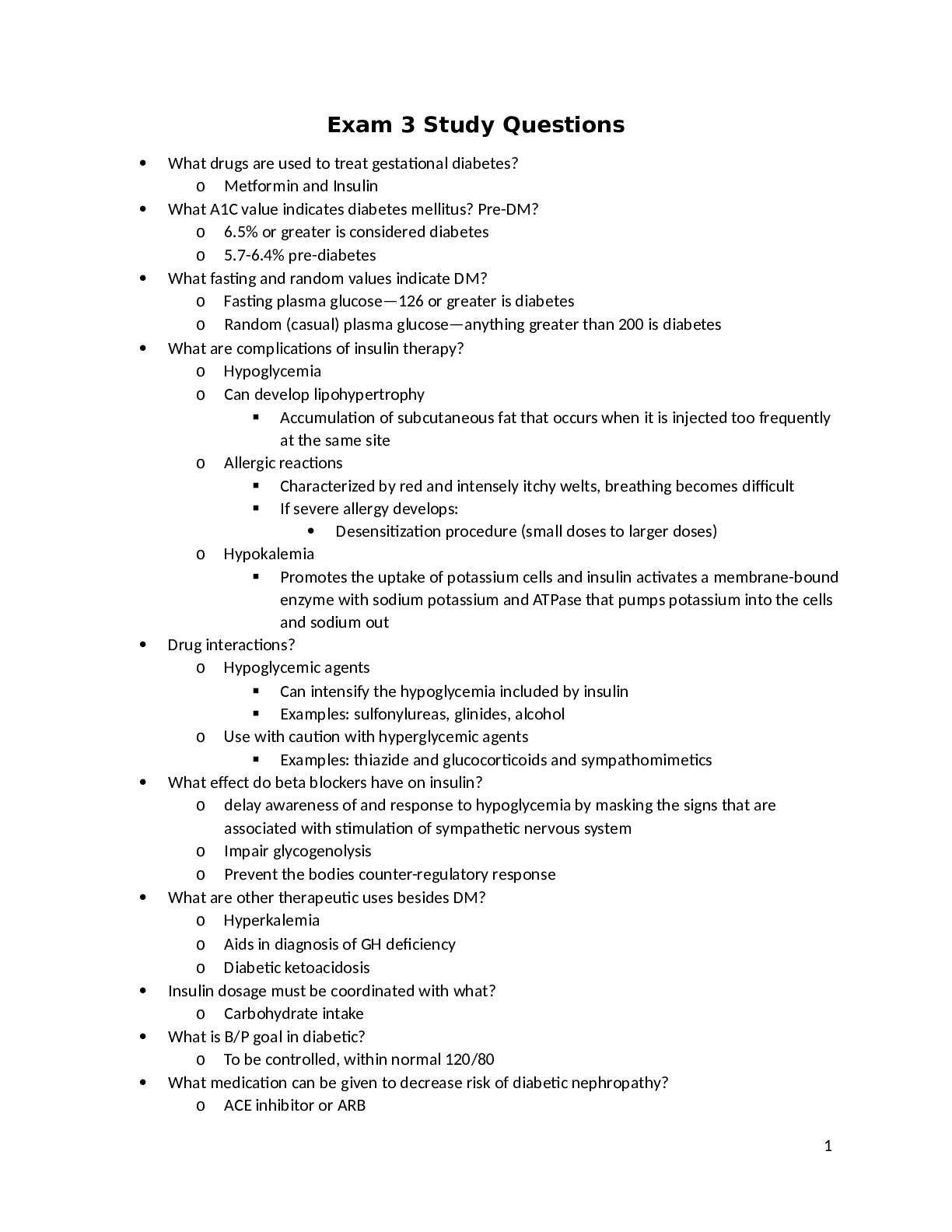
Reviews( 0 )
Document information
Connected school, study & course
About the document
Uploaded On
Aug 01, 2022
Number of pages
39
Written in
Additional information
This document has been written for:
Uploaded
Aug 01, 2022
Downloads
0
Views
89

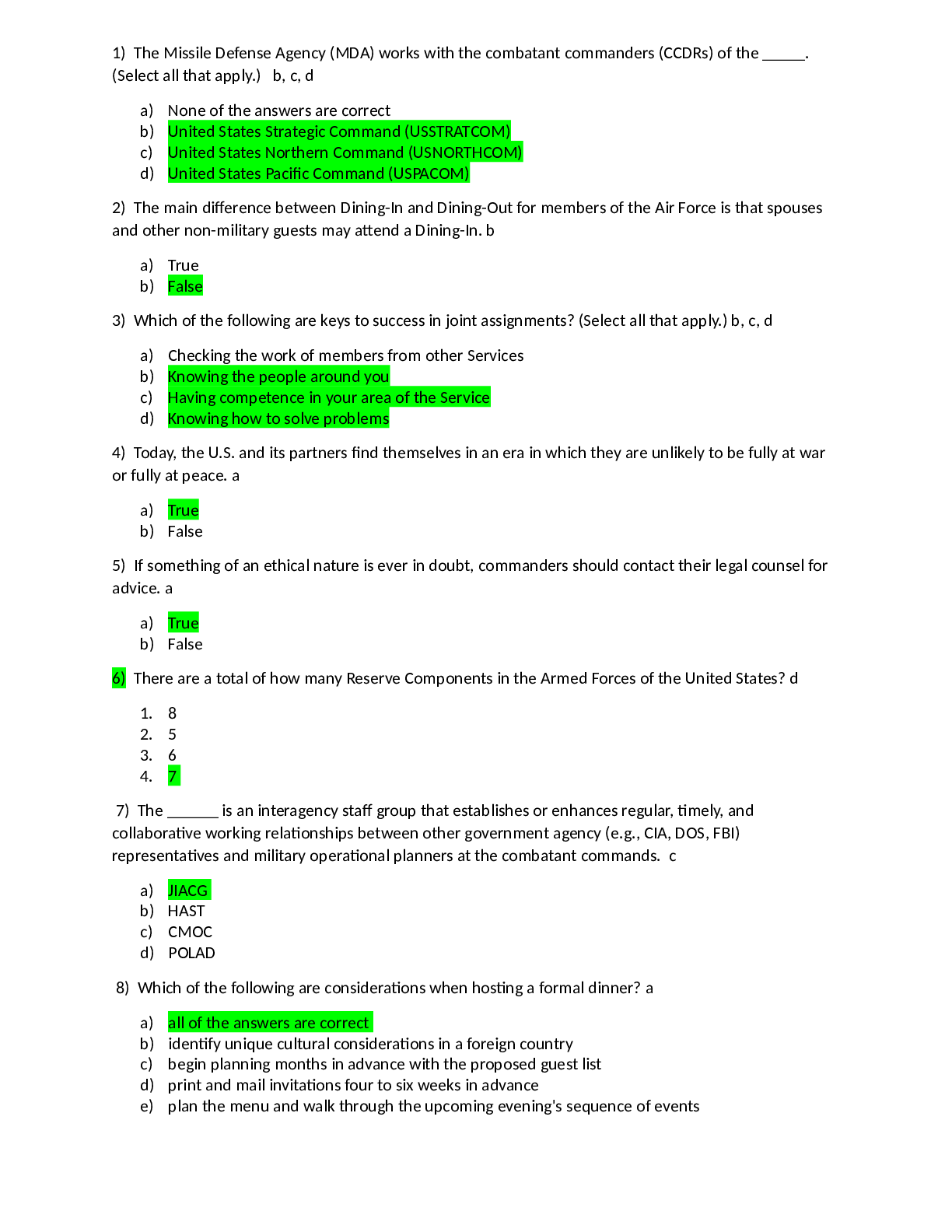
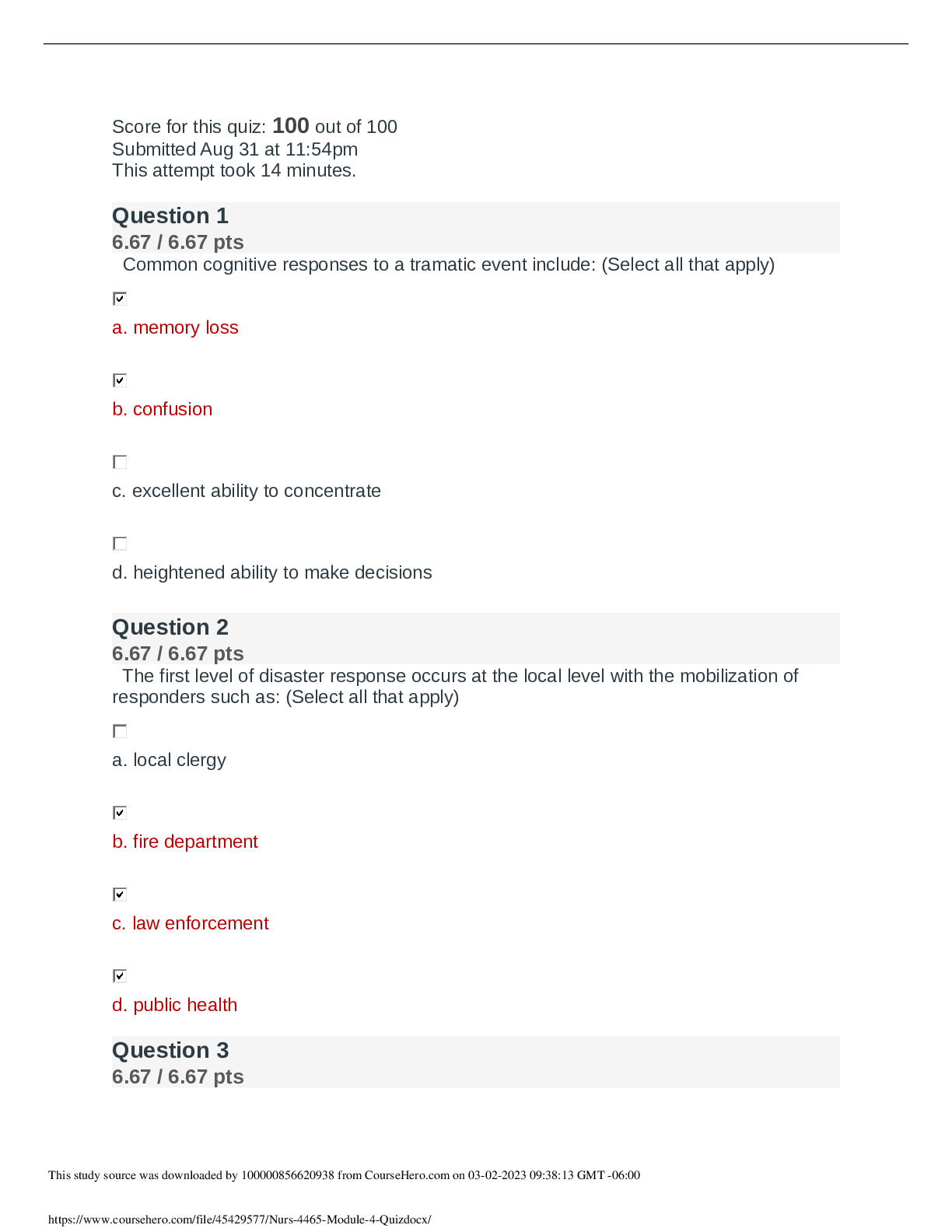
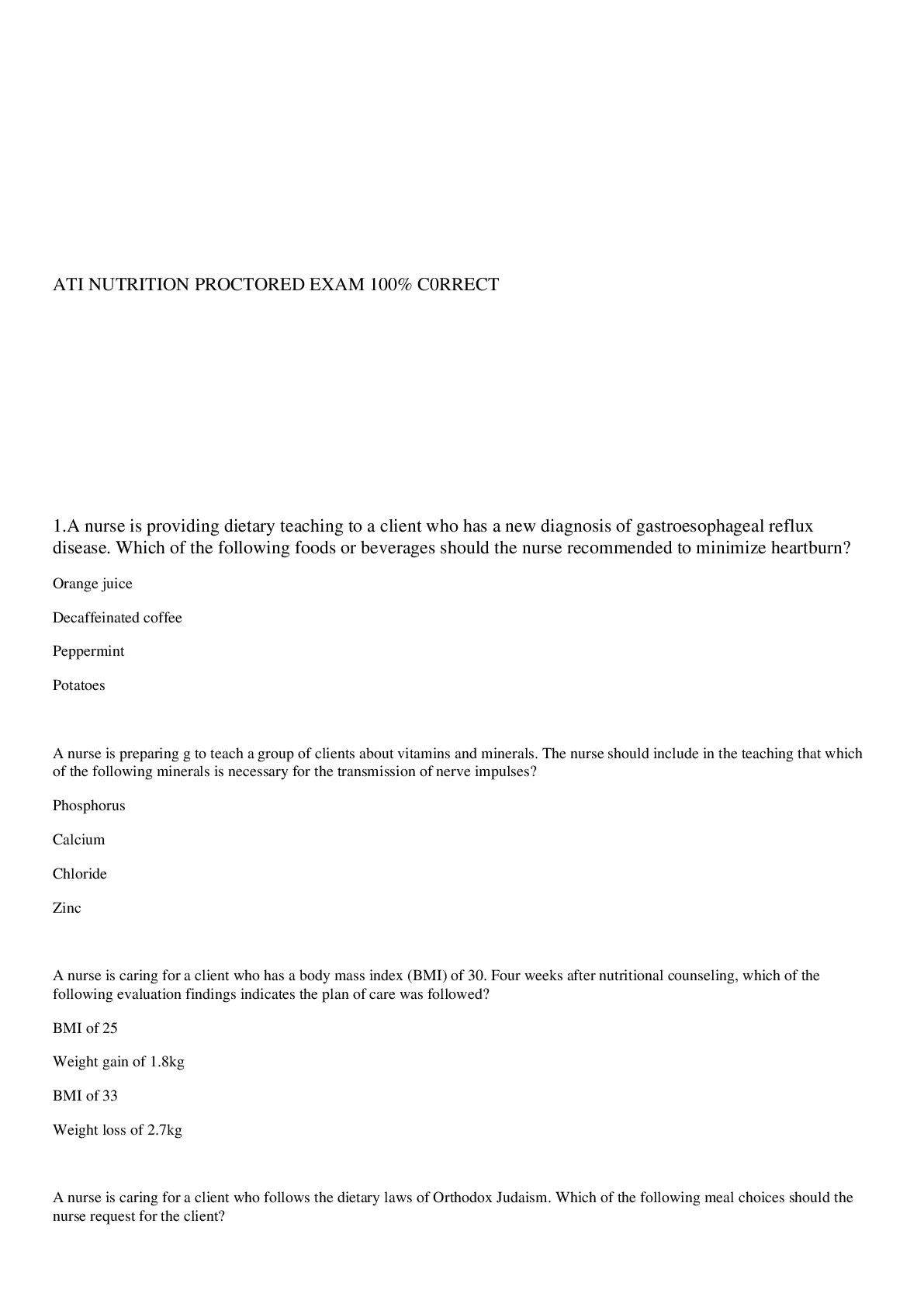
.png)
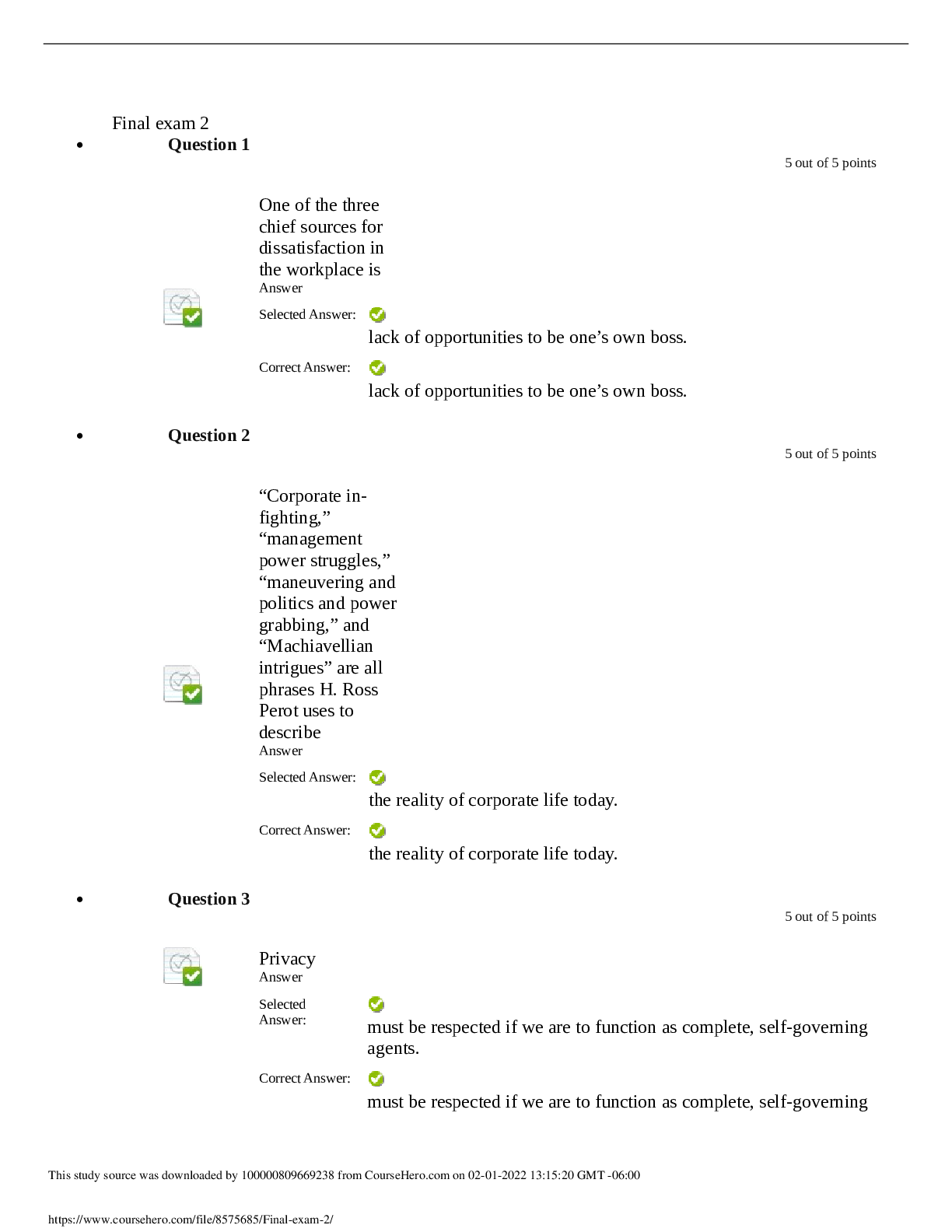
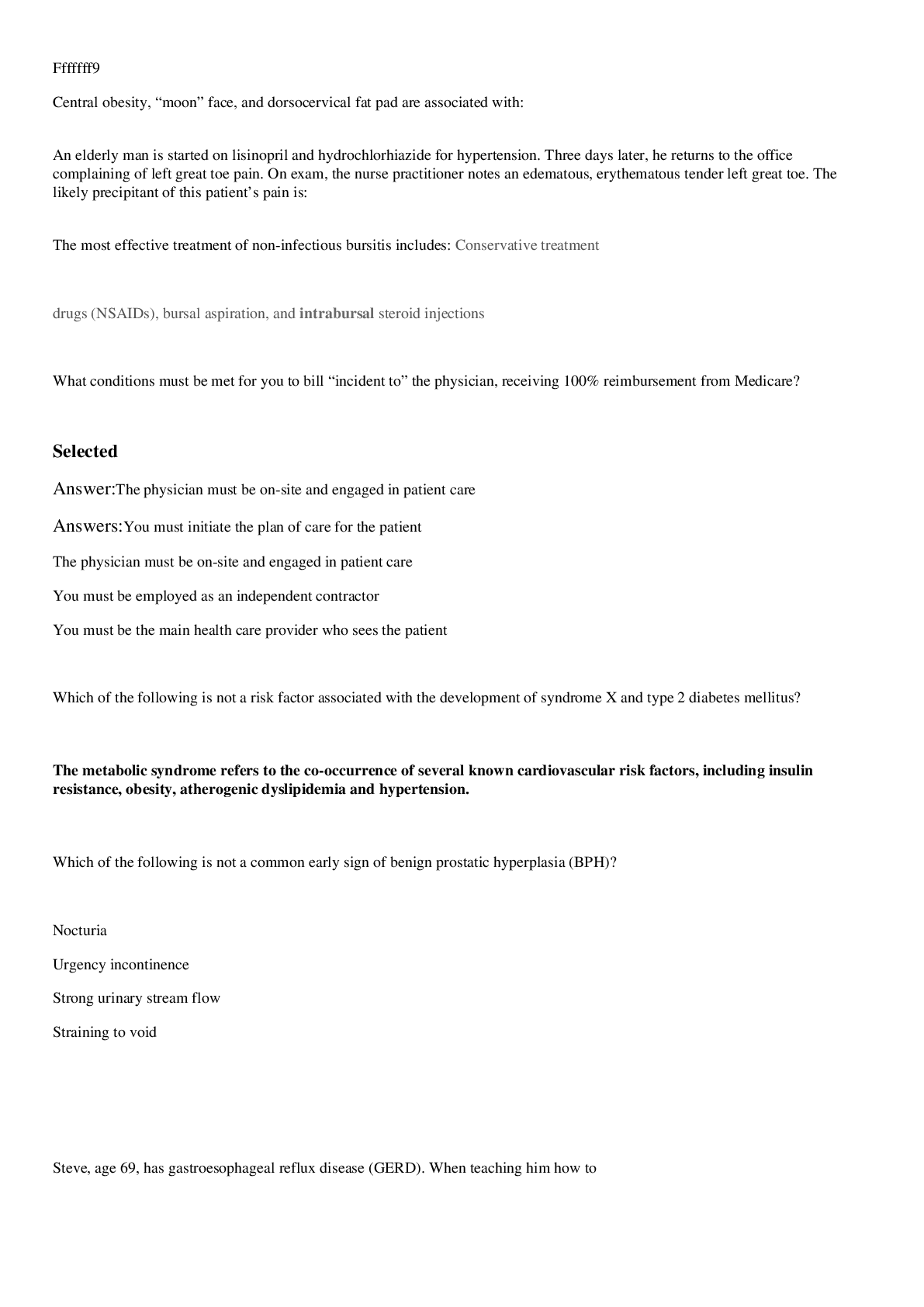
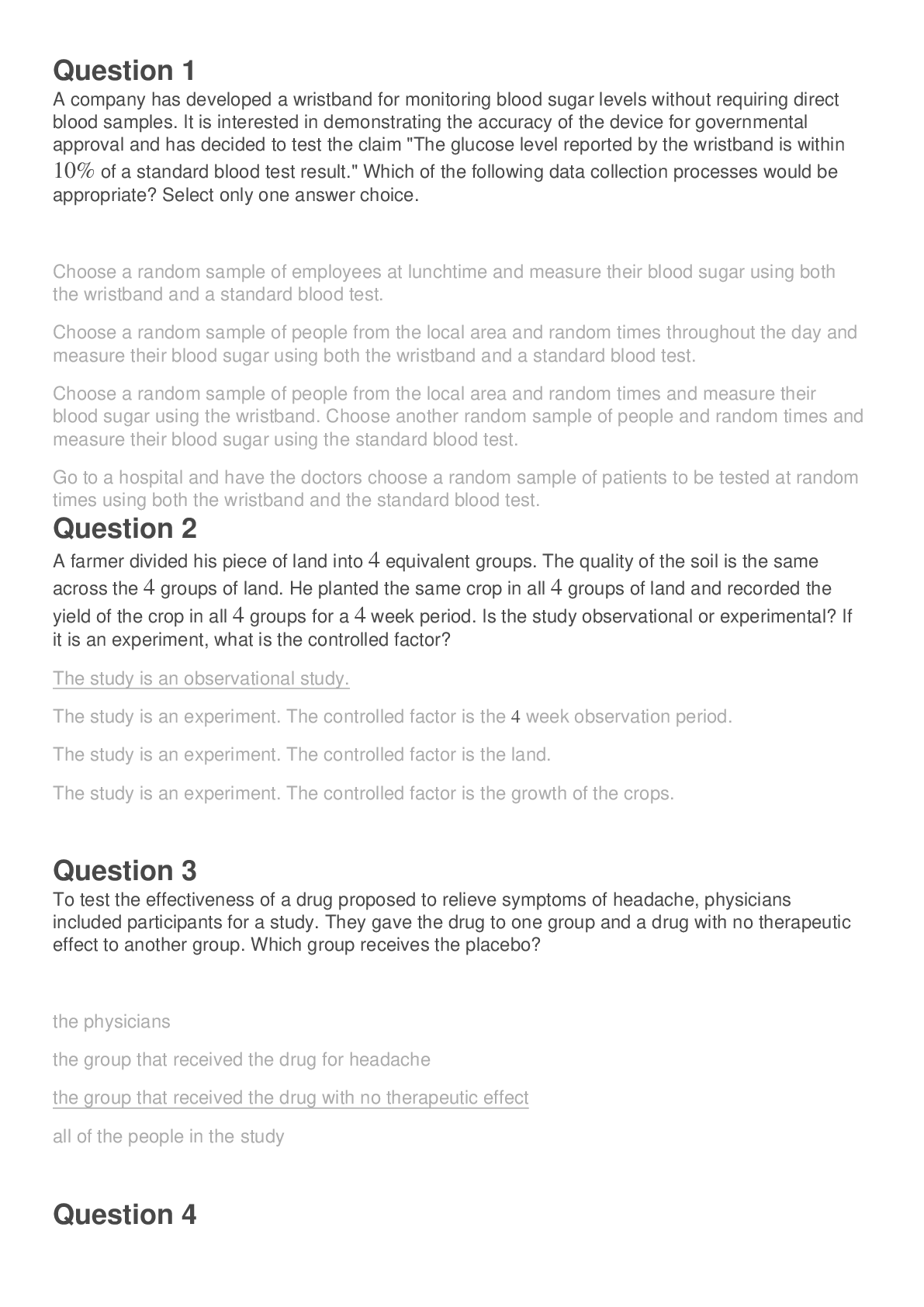
.png)
